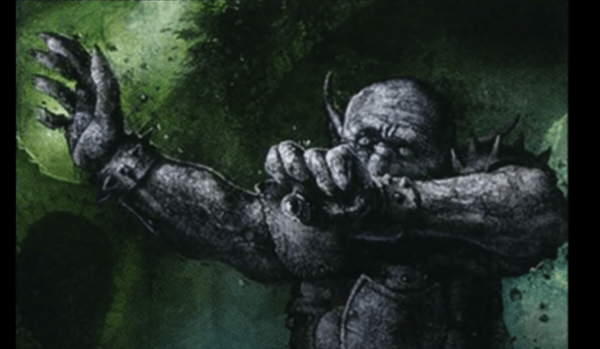Bestowing temporary life to nonmagical objects, a fifth-level mage can make a small army of everyday items under his mental control. This transmutation spell has a range of 120 feet, giving it a large variety of objects to animate.
What is Animate objects 5e: mechanics and requirements
Attributes
- School: Transmutation
- Casting Time: 1 action
- Level: 5th level
- Range: 120 feet
- Targets: Up to ten nonmagical items
- Components: V, S
- Duration: Concentration, up to 1 minute
- Classes: Artificer, Bard, Sorcerer, Wizard
- Subclasses: Cleric (Forge)
Animate Objects Description
Objects come to life at your Command. Choose up to ten nonmagical Objects within range that are not being worn or carried. Medium Targets count as two Objects, Large Targets count as four Objects, Huge Targets count as eight Objects.
You can’t animate any object larger than Huge. Each target animates and becomes a creature under your control until the spell ends or until reduced to 0 Hit Points.
As a bonus Action, you can mentally Command any creature you made with this spell if the creature is within 500 feet of you (if you control multiple Creatures, you can Command any or all of them at the same time, issuing the same Command to each one).
You decide what Action the creature will take and where it will move during its next turn, or you can issue a general Command, such as to guard a particular Chamber or corridor. If you issue no commands, the creature only defends itself against Hostile Creatures. Once given an order, the creature continues to follow it until its task is complete

Advantages and Drawbacks
Advantages:
- Overwhelming Numbers: The Animate Objects spell allows you to animate a significant number of objects, only increasing with the higher the spell level.
- Long Range: When this spell is cast, the caster has a range of 120 feet to choose which objects to animate, giving you multiple options of objects from the area.
- Guaranteed Animation: Animating the objects is done without a saving throw, and a set number of objects are allowed.
- Guaranteed Command: Once the objects have been animated, they will follow your commands until the spell ends without retaliation, even when the order is destined to kill them.
- Upcast: When you cast this spell using a spell slot of 6th level or higher, the number of objects increases by two for each slot above 5th.
- Casting time: Animate Objects require only one action to be cast.
- Blindsight and Flight: Due to the magical nature of the animated objects, they move around with magical flight and have 30 feet of blindsight. With these two abilities, the objects can easily maneuver around complex paths and challenging terrain, but also, they can perceive objects and movements that other creatures wouldn’t.
- Damage Types: The damage type of the object can vary based on its form; a table can deal with bludgeoning, while a sword can deal with slashing damage.
- Mental Link: After the spell is cast and the objects have been animated, the caster can mentally issue commands to the objects up to 500 feet away, which can be used for strategic advantages.
Disadvantages:
- Concentration: The Animate Objects spell requires concentration after being cast, or the animated object will be returned to ordinary objects.
- Duration: The spell only has a duration of one minute, meaning the objects remain alive for a short duration of time.
- Weak Objects: The animated objects have a low number of hit points and damage compared to creatures of CR 5, meaning they can easily be killed with a single hit or an AoE spell/attack.
- Components: The spell requires both somatic and verbal components to be cast. These requirements mean that the spell cannot be cast in silence/stealth and cannot be cast if the caster is restrained.
- Crowd of Objects: Animating the maximum possible number of objects can result in a room full of flying couches and tables, which can restrict the movement of both allies and enemies. Even in combat, this can be a problem as it might not allow you to reach the opponent while they carve through the objects.
- Short Sight: While the objects have blindsight, the range of their sight is very restricted, and outside of that range, they have no way of obtaining information. Enemies lying outside this range can efficiently deal with the objects and waste the caster’s spell.
- Retain Damage: When the spell ends, or the objects are reduced to 0 hit points, any damage they received while under the spell’s effects carries over to the object in its original form.
- Bonus Action Command: To issue a command to the objects, the caster must use their bonus action, wasting any other uses it could have, such as spells.
- Action Economy: Using this spell can drag combat down to a halt since each object has its turn.

Best uses for Animate Objects 5e
1. Overwhelm
On many occasions, adventuring parties will find themselves battling against a single, more significant, stronger opponent, which they cannot defeat easily in a one-on-one fight.
This spell can come in handy in those situations, as it can provide great distractions to the opponent or even be used to out-damage them since the objects will have a more significant number of attacks than the enemy.
2. Cannon Fodder
Are there too many enemies to fight? Is the party weakened and in need of an escape? Do you need an opponent to waste their time, spell slots, or ammo? The animated objects can be used in situations such as these.
Animating the highest number of things possible and throwing them at the front lines can force the opponent to burn through their resources, trying to reach you again and giving you a potential window of time to escape or form a counterattack.
3. Block a path/doorway
The animated objects can be pushed against a door or in front of a path to block it. The caster can even issue the command “Defend the path,” making the objects remain there and fight till the spell ends or till they are reduced to 0 hit points. Even when the spell is over, the objects will still be an obstacle and can slow down anyone passing.
4. Move and transport objects.
While Animate Objects are primarily used for strategic advantage and combat, they can also move objects a small distance. This can be sued to transport furniture or chests of gold outside a dungeon and onto a carriage or to move objects that cannot be customarily carried.
5. Chaos
This spell can be used brilliantly for players who enjoy chaos and mass confusion. This spell can be used to animate different sizes of objects to obstruct, distract and attack any creature around you.
It can even be valid outside of combat, creating a large scene and letting the objects run amuck with a command like “Attack everything” or “Spin” you can make the chaos needed to stealthily perform tasks or just enjoy the show.
Advice and final thoughts
Most full casters can learn the spell Animate Object; it should be chosen with an idea in mind. The spell does not provide precise and guaranteed offensive capabilities, so choosing it must be done in combination with the rest of the character’s build.
A conjuration wizard or artificer could benefit greatly from this spell since it can be used to vastly increase their number of companions. In more general use, the spell can become a great tool if it is discussed with the party to allow for more efficient usage of the space it gives. In conclusion, the spell Animate Objects is a tool for causing chaos and scheming.
Reading tip: if you like using objects as a minion make sure to check out our Earth Elemental and Helmed horror guide!
Animate Objects FAQ
Why animate smaller objects when bigger ones are stronger?
The different sizes of the objects can provide additional benefits. The bigger objects have higher hit points and damage but lower AC than the smaller ones. The most crucial difference between the sizes is the number; you can animate smaller objects. With this in mind, you must decide which is better for your situation. If you want a better offense, the bigger objects are more useful, but if you need to distract the enemies, the larger numbers of the smaller objects are far better.
Can you increase the range of Animate Objects?
As a sorcerer, you can spend one sorcery point to double the range of Animate Objects.
